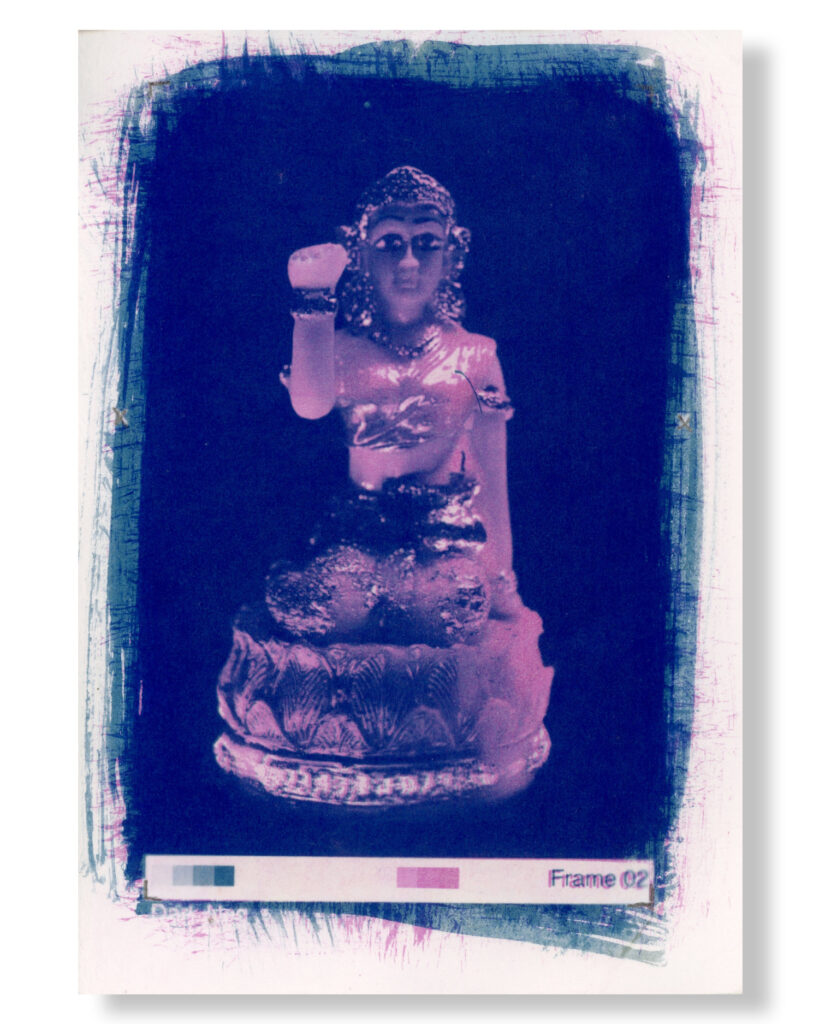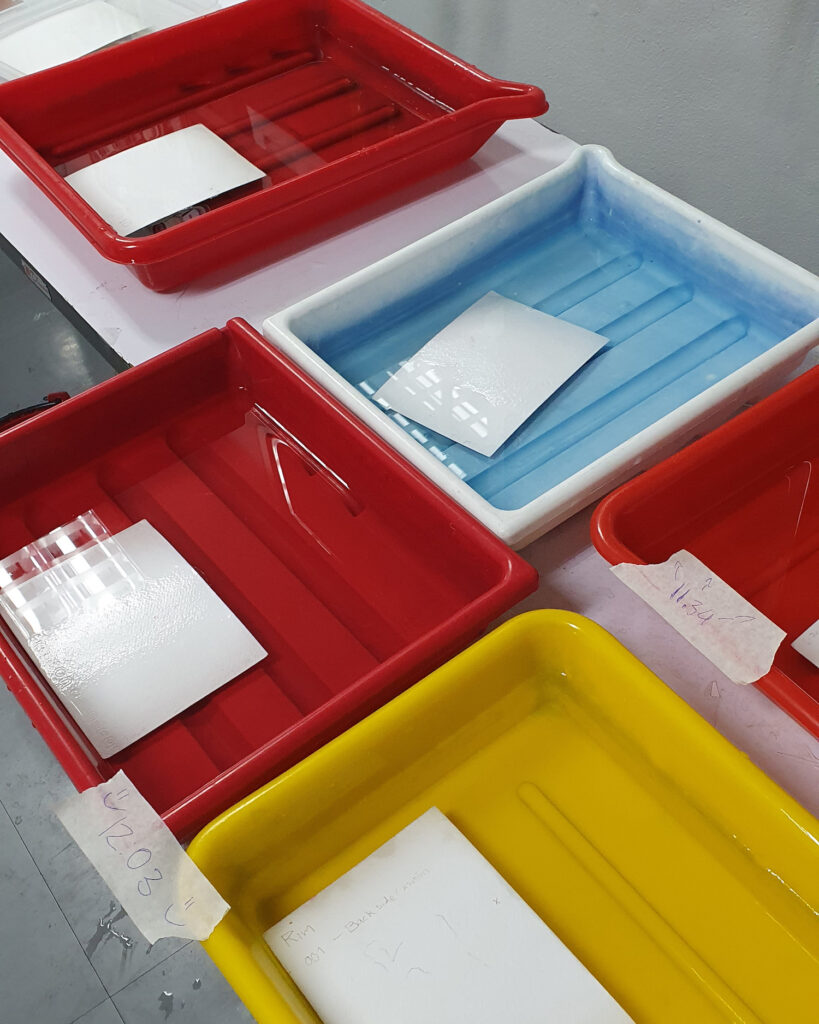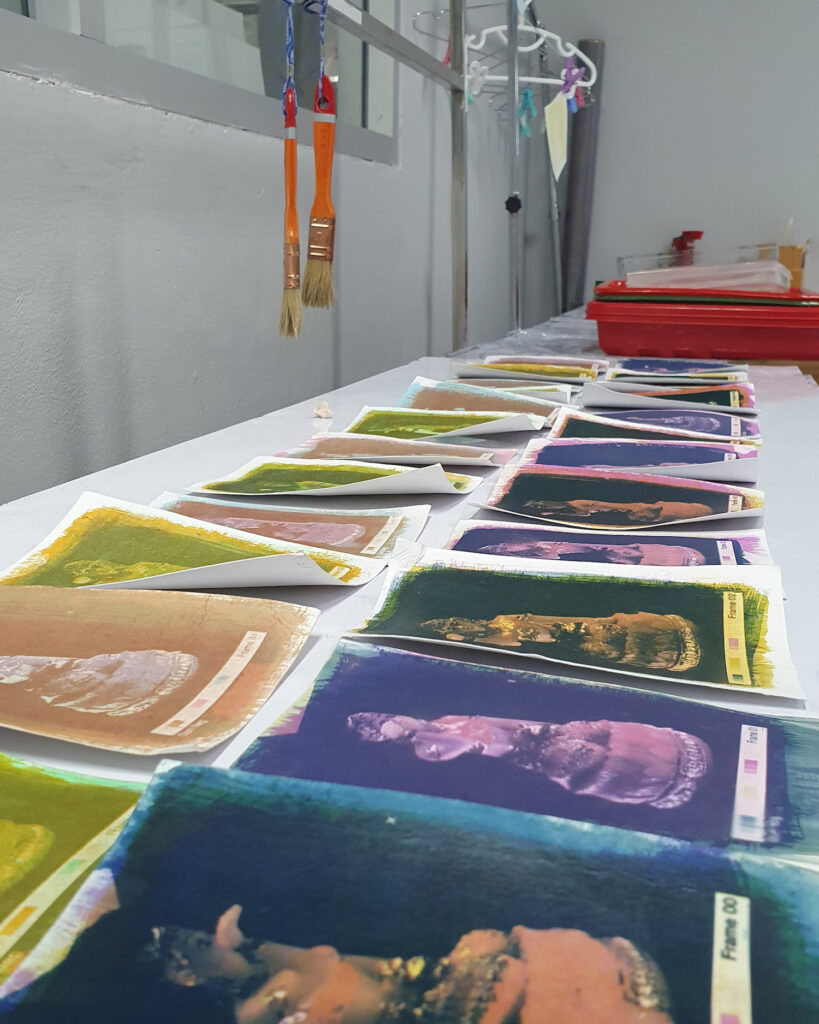In the course “913212 Analogue and Alternative Photography” that I teach, I introduced students to an innovative project that blends 19th-century photographic techniques with contemporary digital imagery. The centrepiece of this project was a 12-frame loop animation of Nang Kwak, a figure from Thai culture believed to bring good fortune, which we captured using a video turntable. This project taught students to print each animation frame as a colour-separated digital negative. These negatives were then used to craft colour gum bichromate prints, layer by layer. Once completed, the artwork was scanned and animated, demonstrating a harmonious fusion of historical and modern photographic processes.
The 19th-century gum bichromate process we explored combines gum arabic, bichromate salts, and pigments to create a light-sensitive emulsion. This emulsion hardens in areas exposed to light, allowing us to create images with significant depth and texture from multiple pigment layers. This method is appreciated for its ability to produce precise and artistically rich images, offering a unique aesthetic that merges photographic detail with a painterly effect.




